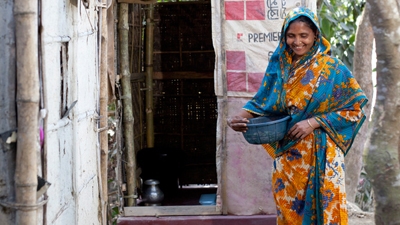Golam Mostafa lived with his family for many years with an unhygienic pit latrine. Mostafa, the owner of a small printing press in Jamalpur town, had previously considered upgrading his latrine, particularly for his wife and young daughter’s use. However, he didn't see the upgrade as a necessity nor could he afford the estimated US$83 a new system would cost him and his family.
But then Mostafa met Hafiz Rahman, a local sanitation entrepreneur from whom he would purchase his first improved, twin-pit offset latrine, complete with handwashing facilities.
Hafiz is one of more than 200 entrepreneurs in Bangladesh who received specialized training through a sanitation marketing program supported by the World Bank’s Water and Sanitation Program (WSP), alongside other partners.
Since 2008, the program has taught entrepreneurs such as Hafiz about the construction and maintenance of hygienic latrines, as well as how to combine social and commercial marketing approaches to stimulate demand for improved sanitation facilities for the benefit of the poor. Participants learn to emphasize the benefits of improved sanitary latrines and to offer a selection of product and payment options that are helping make improved sanitation options more widely available and affordable to all consumers.
While 90 million people in Bangladesh have moved away from practicing open defecation, diarrheal diseases are still the second-leading cause of child and infant mortality, creating an urgent need for better quality sanitation options. Many rural households that do have latrines use “direct pit latrines,” which lack a water seal and are extremely vulnerable to floods and storms, destroying the latrines and spilling their contents, which spreads disease.

